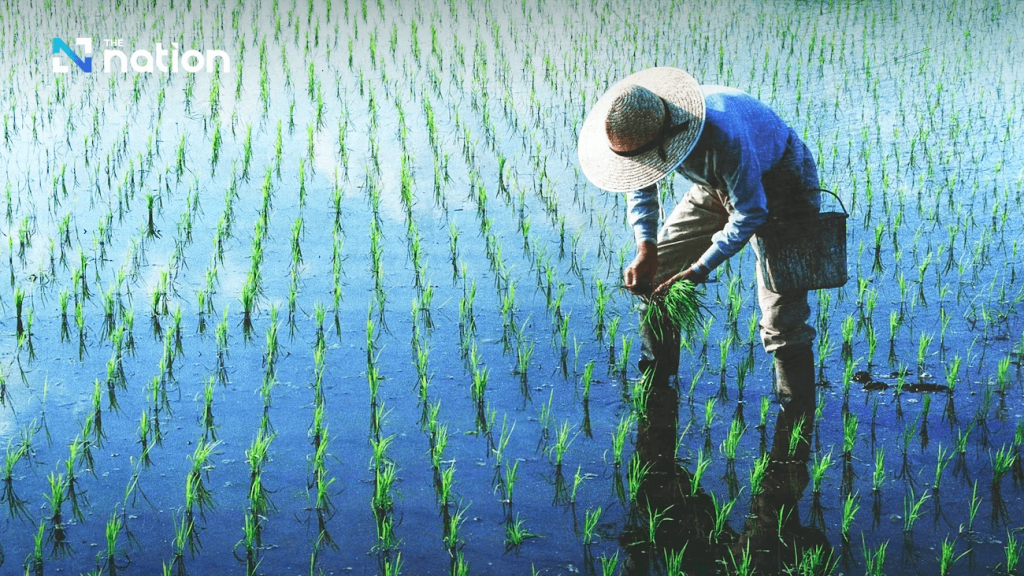Tags
Thailand’s rice yields considerably lower than other countries

Department of Rice sees high potential to promote coloured varieties.
Thailand’s average rice yields are much lower than other major Asian rice-producing countries, Anon Nonsee, deputy director-general of the Department of Rice, said.
Anon said the average rice yield per rai (0.16 hectare) in Thailand was 400-500 kilograms, which is much lower than Vietnam’s average of 1,000 kilograms per rai or China’s 1,000-1,200 kilograms per rai.
Some Thai rice varieties achieve yields of 1,000-1,200 kilograms per rai, but when averaged with varieties like jasmine rice, which is harvested once a year with yields of 350-400 kg per rai, the overall average yield in Thailand is lower.

Jasmine rice has unique strengths due to its fragrance and soft texture, attributed to the dry conditions in certain areas of the Northeast and some provinces in the North. The drier the year, the more aromatic the rice becomes, although this comes at the cost of lower yields.
To enhance its value, the department sees the need to develop new marketing plans, starting with categorising rice types, segmenting markets, and zoning rice cultivation to align with market demands.
“Low-yield rice with high market demand, such as coloured rice, brown rice, and indigenous varieties, which account for about 5-10% of total production, caters to niche consumers. These can be positioned like Hermès products — rare but valuable—targeting high-end markets with strong purchasing power,” Anon explained.
Meanwhile, coloured rice has become increasingly popular among Chinese consumers due to its health benefits from certain unique compounds, although it is rare and expensive in international markets due to limited exports, Anon said. As a result, Chinese tourists visiting Thailand have shown a growing preference for consuming coloured rice.
The department is currently coordinating with the Tourism Authority of Thailand (TAT) to connect with restaurants and promote the use of coloured rice among tourists, aiming to enhance its value and raise awareness of Thai rice.

In 2024, the Department of Rice plans to cultivate seven varieties of coloured rice, known as “rainbow rice”, with shades including deep purple, light purple, white, light green, and dark green. In Chiang Rai province, these rice fields will be arranged in the shape of a unique cat design, while in Phayao province, fields will form a dinosaur and “Nong Mutjai”, a peacock mascot. These sites will feature observation towers and walkways, turning them into notable landmarks.
Additionally, research indicates that the leaves of various coloured rice varieties are rich in protein and can be dried and sold at 50 baht per kilogram. From one rai of land, 2,000 kilograms of fresh leaves can be harvested, yielding 1,000 kilograms after drying, generating additional income of approximately 40,000 baht per rai for farmers. The extracted protein can be utilised in health foods and plant-based products.
Additionally, coloured rice can be processed into hydrolysed protein, valued at no less than 100,000 baht per kilogram, which has drawn significant interest from China and Japan.
Rice farming does not have to solely aim at producing rice for consumption, the department said. Certain high-protein coloured rice varieties can be cultivated by adding specific micro-organisms, harvesting before the rice grains mature, and then bundling and selling the stalks directly as animal feed. This process takes about four months and yields higher prices than rice grown for consumption. The department is promoting this practice in Mukdahan province, where it can be done twice a year. However, current production does not meet market demand.
These initiatives by the department aim to help farmers transition from being among the lowest income earners in the country. By adopting these new practices and aligning their goals with market demands, farmers can explore diverse income-generating opportunities, contributing to a more sustainable way of life.
https://www.nationthailand.com/blogs/news/general/40043955Published Date: December 8, 2024






